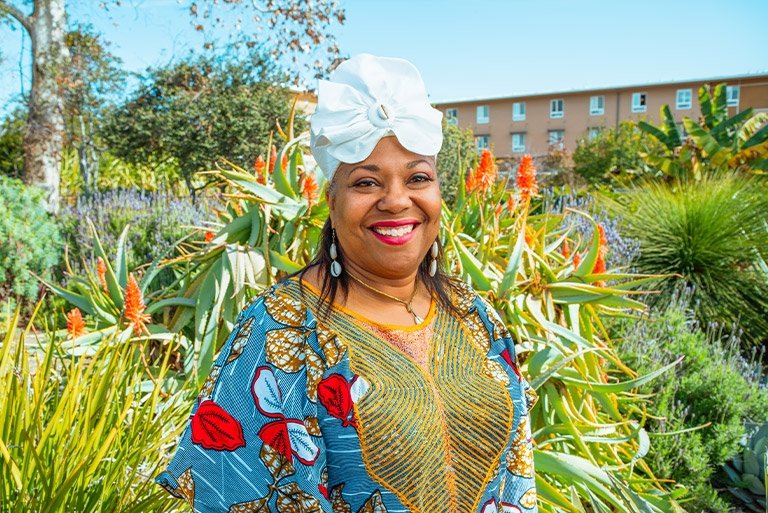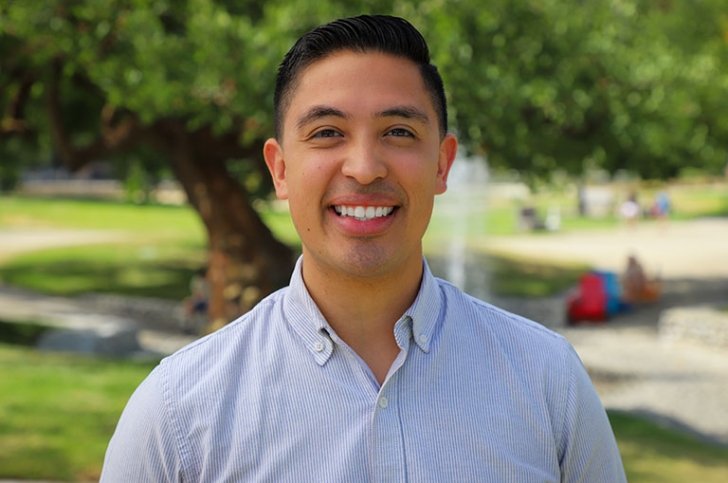Black History Month Spotlight: Leeshawn Cradoc Moore ’87
Meet alumna Leeshawn Cradoc Moore ’87 (she/her), who is the director of institutional research and assessment at Pitzer College.

Leeshawn Cradoc Moore ’87 earned her MA and PhD at Claremont Graduate University. She served at Pitzer as an associate dean of admission and associate dean of students. She was formerly director of institutional research at two other institutions.
How do your culture and family background influence your work?
My maternal and paternal grandparents were from New Orleans, Louisiana. My family is heavily influenced by the culture of the city. All my grandparents worked in service jobs. My maternal grandmother was a sharecropper. She had a saying that she picked a lot of cotton to get here. She was referring to making a better life for all her children. I took that saying to heart and honored her by earning my PhD. Only six percent of African Americans have doctorates.
Few people look like me in institutional research because few women of color and African American women are in statistical or mathematical areas. I’m purposefully doing something difficult because I want to be a leader for younger people—not only African Americans but all people.
I’m committed to Pitzer. This is an opportunity for me to tell the success stories for students of color and all graduates. We are making sure Pitzer students are succeeding, and if we’ve succeeded or fallen short, that’s the story I need to tell.
How did you get to where you are now? What challenges and victories have you experienced?
The first love affair with institutional research came early in my career in higher education. Pitzer President Frank Ellsworth came to my admission office and asked how many students of color and females we had. I was also asked to find out the high school origins of students. That’s how I began with data. I left and returned to Pitzer after becoming an established institutional research leader to lend my talents to my alma mater.
One of my proudest moments at Pitzer was recruiting my mother Fannie Cradoc '93 to be a New Resources student. She went on to get a master’s and became a teacher for 17 years. Another proud moment was the minority program I created as the associate dean of admission. Yvonne Berumen ’97 was my minority intern and now is the vice president of admission at Pitzer.
What is your favorite part about Pitzer?
It’s a welcoming place. Students have a say here. You have strong faculty who care about teaching. There were not a lot of African American faculty when I was a student, but there were faculty like Agnes Moreland Jackson, Rudi Volti, and Jack Sullivan who were interested in my success. I was encouraged to get my bachelor’s degree in psychology and Spanish. I learned how to speak Spanish fluently from living at a home with a Mexican family, and it was life-changing. Pitzer provided that opportunity to learn about Mexican culture and learn about the African descendants in Mexico.
What does Black History Month mean to you?
It is a time to reflect on the past, present, and future of African Americans. Anywhere there’s water, Africans were sent and enslaved against their will to endure horrific labor conditions. We must confront our past and look for ways to make the conditions of underserved students of African descent better.
During this month, some people say they don’t see color, but that’s the worst thing you can say to an African American woman. Most of the time African American women feel invisible. There are so few in a class or meeting. You don’t see me? You don’t cherish how I look? You will find me dressed in African clothing during Black History Month and throughout the year. I celebrate my heritage and would welcome conversation with anyone about the many accomplishments of Africans and African Americans that make this world a better place!
News Information
Published
Author
Bridgette Ramirez


